Overview
This article presents five essential steps for achieving high-efficiency solar panel placement. It begins with an understanding of solar efficiency basics and progresses to identifying key placement factors. Next, it discusses the selection and preparation of an optimal site, followed by the correct installation of panels, and concludes with the importance of maintaining system performance. Each step highlights critical factors such as:
- Orientation
- Tilt angle
- Shading
- Regular maintenance
This demonstrates that careful planning and execution can significantly enhance energy production and extend the longevity of the system.
Introduction
Maximizing energy production in residential solar systems hinges on high-efficiency solar panel placement. Understanding the fundamentals of solar panel efficiency and the various factors influencing optimal placement enables homeowners to enhance their energy output and savings significantly. Yet, with numerous variables at play—such as orientation, shading, and local climate—how can one ensure their solar installation is positioned for peak performance?
This guide delves into the essential steps and considerations necessary for achieving optimal results in solar panel placement, paving the way for a sustainable energy future.
Understand Solar Panel Efficiency Basics
Photovoltaic efficiency is the percentage of sunlight a photovoltaic system can convert into usable electricity. Most residential solar arrays achieve efficiencies between 15% and 22%. While higher efficiency modules may come at a premium, high-efficiency solar panel placement can produce more energy in constrained spaces. Understanding these fundamentals is crucial for selecting the right systems for your needs and optimizing their configuration for maximum sunlight exposure.
Key factors influencing efficiency include:
- Type of solar cells: Monocrystalline panels generally outperform polycrystalline panels in efficiency.
- Temperature: Solar collectors operate more effectively at cooler temperatures.
- Shading: Even partial shading can significantly reduce a unit's output.
By grasping these concepts, you can appreciate the critical role of high-efficiency solar panel placement and installation.
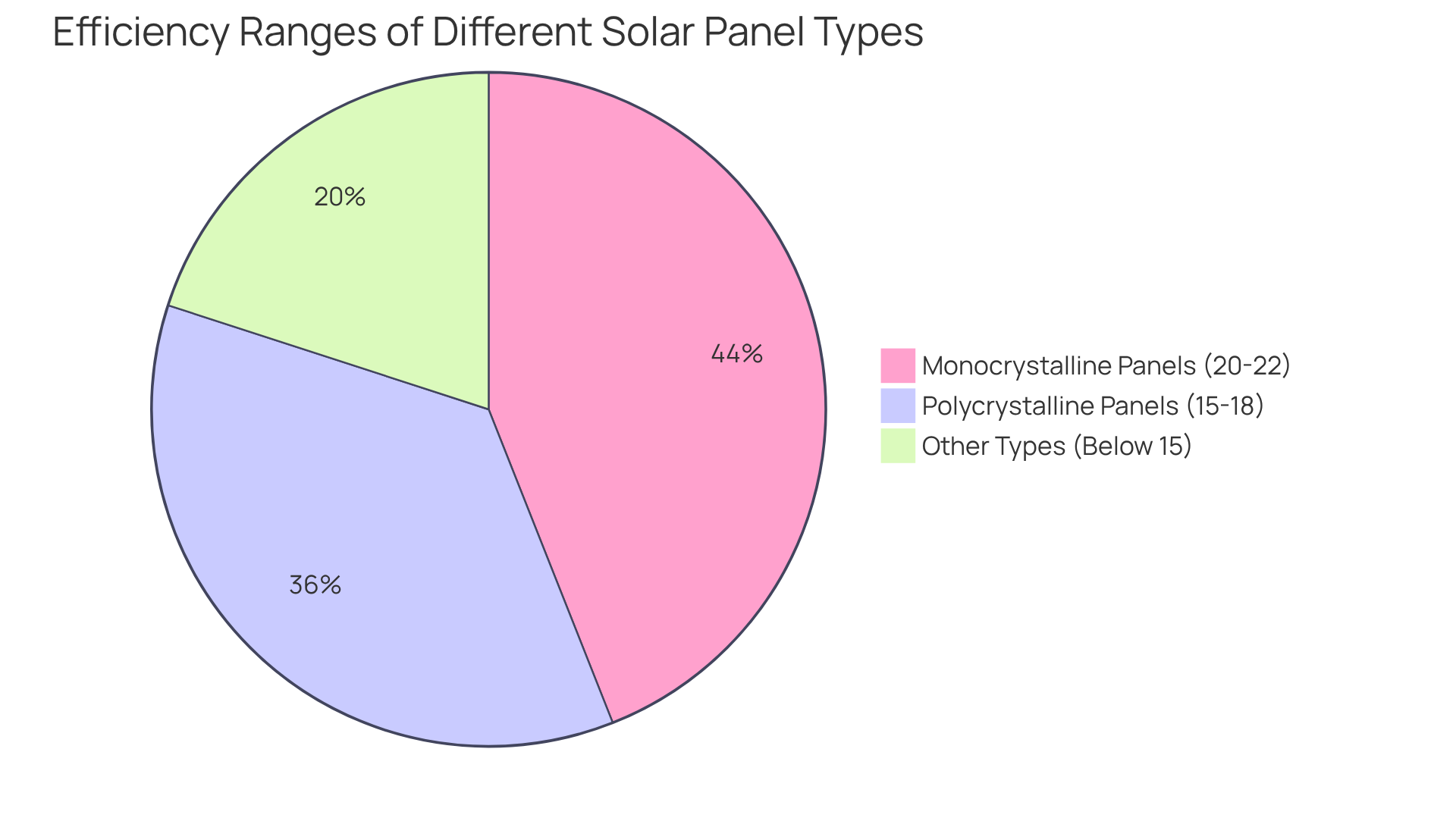
Identify Key Factors Affecting Placement
Several key factors significantly influence the placement of solar panels:
- Orientation: In the Northern Hemisphere, south-facing panels capture the most sunlight throughout the day. Modifying the angle of the surfaces can further enhance their performance, maximizing energy generation. Experts note that the optimal arrangement orientation, specifically high-efficiency solar panel placement, is crucial for achieving the best efficiency.
- Tilt Angle: The ideal tilt angle for solar arrays typically equals the latitude of the installation location, aiding in maximizing solar exposure. Seasonal adjustments may also prove beneficial; for instance, a steeper angle in winter can capture more sunlight when the sun is lower in the sky. Industry statistics indicate that modules set at the correct tilt can enhance energy generation by up to 25% compared to those positioned at a fixed angle.
- Shading: Avoiding shaded areas caused by trees, buildings, or other obstructions is crucial. Even minor shadows can lead to significant reductions in output, emphasizing the need for careful site assessment. A case study on system performance indicated that setups with even minor shading faced a 30% reduction in efficiency.
- Weather Conditions: Local climate patterns, including average sunlight hours and seasonal variations, should be considered when determining the optimal placement for renewable energy devices. For example, regions with frequent cloud cover may require different strategies compared to sunnier locales. Understanding these conditions can assist in customizing the setup to optimize performance.
- Roof Structure: The roof must be structurally sound and capable of supporting the weight of the solar units. Flat roofs may necessitate specialized mounting solutions to optimize angle and exposure, while sloped roofs typically allow for more straightforward installations. Evaluating roof conditions during energy audits is significant for ensuring optimal placement of solar modules.
By thoroughly evaluating these factors, you can determine the most appropriate sites for high-efficiency solar panel placement, which will ensure maximum efficiency and long-term energy savings.
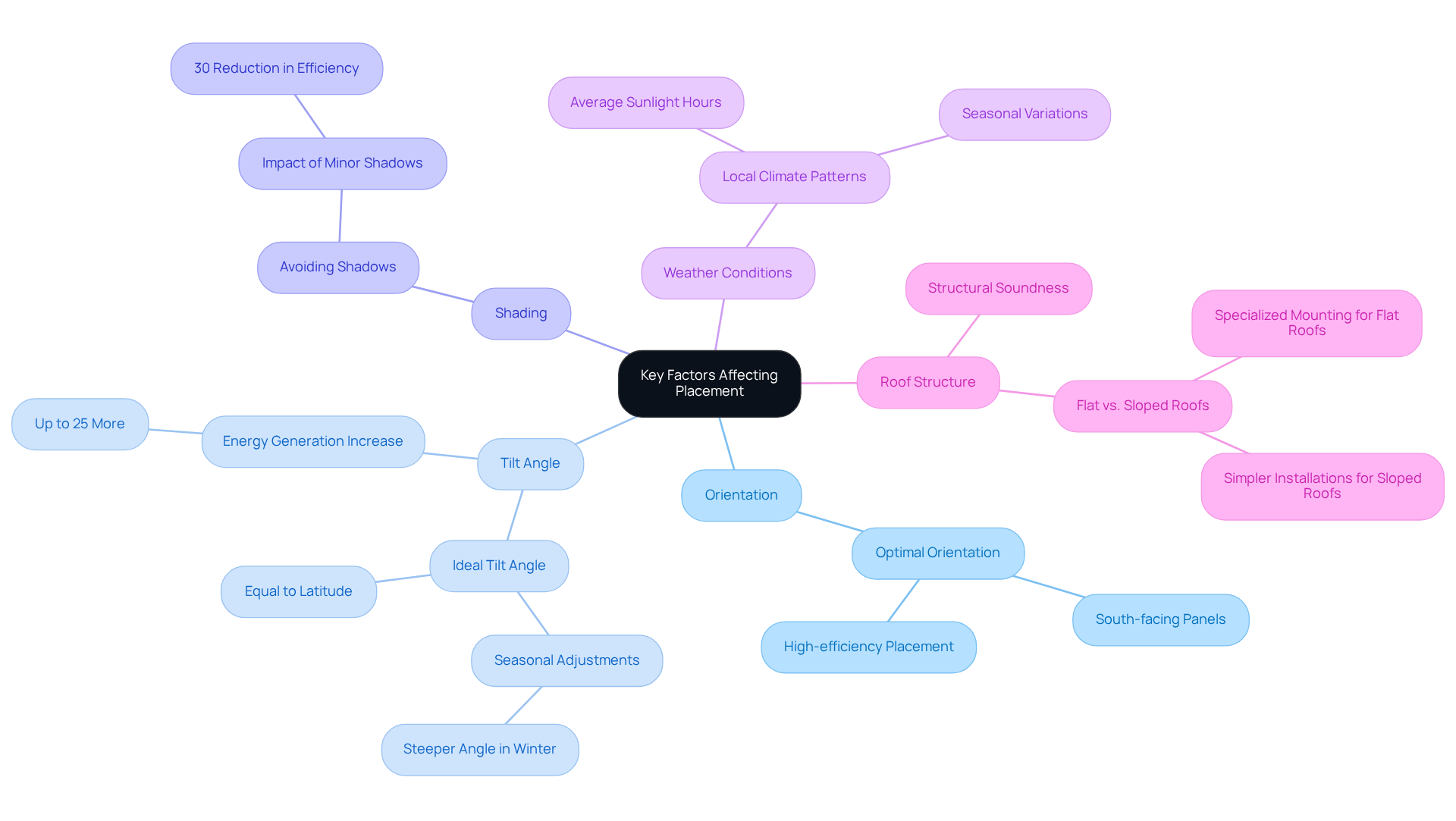
Select and Prepare the Optimal Site
Selecting and preparing the optimal site for high-efficiency solar panel placement is crucial for success. To ensure a seamless process, follow these essential steps:
-
Conduct a Site Assessment: Evaluate the area for light exposure, shading, and orientation. Utilize instruments such as pathfinders or shading analysis software to assess potential shading throughout the year. Harbinger Land's GIS modeling services provide detailed sunlight analysis, identifying the best locations for setup.
-
Check Local Regulations: Research local zoning laws and building codes to ensure compliance. Be aware that some areas may impose restrictions on solar installations. Our team is equipped to navigate these regulations efficiently, ensuring that all necessary permits are obtained without delay.
-
Assess Structural Stability: For installations on rooftops, confirm that the structure can support the weight of the solar units. If needed, consider hiring a structural engineer. GIS mapping can identify structural limitations and optimize the high-efficiency solar panel placement, ensuring safety and effectiveness.
-
Clear the Area: Remove any debris, vegetation, or obstacles that could obstruct sunlight access. A clean and accessible area is essential for setup. Our services can facilitate the acquisition of any necessary easements for site clearance, streamlining the process.
-
Plan for Accessibility: Ensure the setup location allows for easy access for maintenance and monitoring post-installation. GIS modeling can assist in planning access routes that minimize disruption and enhance operational efficiency.
By thoughtfully selecting and organizing the location, and leveraging Harbinger Land's expertise in site and right-of-way acquisitions, you lay the groundwork for a successful renewable energy installation. Take action today to secure your solar future.
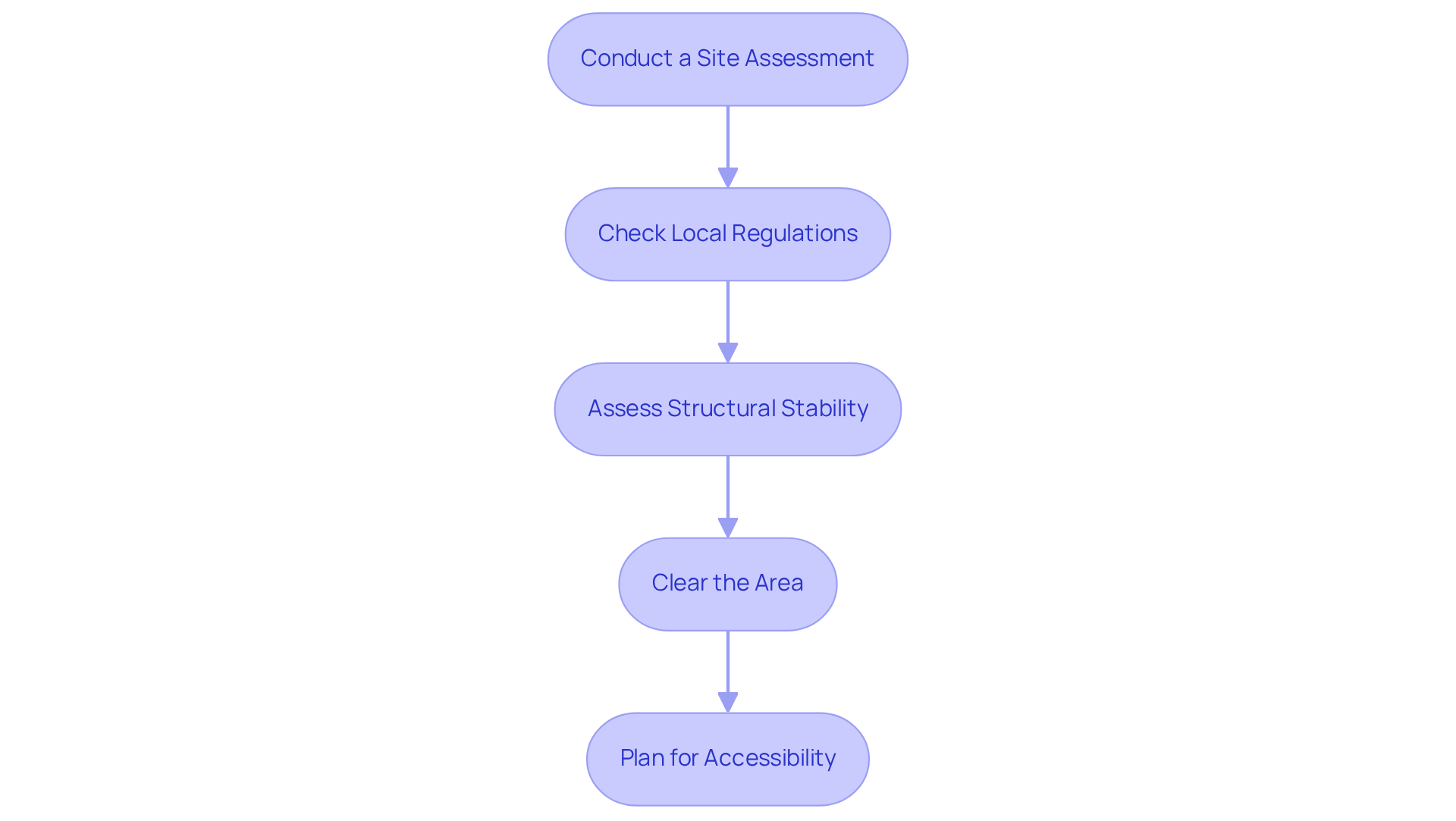
Install Panels for Maximum Efficiency
To achieve maximum efficiency in solar panel installation, it is crucial to adhere to the following steps:
-
Gather Necessary Tools and Materials: Ensure you possess all required tools, including drills, wrenches, and safety gear, along with the photovoltaic modules and mounting hardware.
-
Install Mounting Brackets: Securely attach the mounting brackets to the roof or ground, ensuring they are level and properly aligned. This is essential for the stability of the structures.
-
Position the modules: Carefully place the solar modules on the mounting brackets, ensuring the high-efficiency solar panel placement is oriented correctly for optimal sunlight exposure. Utilize a level to confirm they are straight.
-
Secure the Sections: Fasten each section to the brackets using the appropriate hardware. Ensure all connections are tight to prevent movement or damage.
-
Connect Electrical Wiring: Follow the manufacturer's guidelines to link the modules to the inverter and electrical system. Confirm that all connections are secure and weatherproofed.
-
Conduct a Final Inspection: Before activating the system, double-check all connections, alignment of components, and structural integrity. Ensure everything complies with local regulations.
By diligently following these installation procedures, you can significantly enhance the efficiency and effectiveness of your energy collection system.
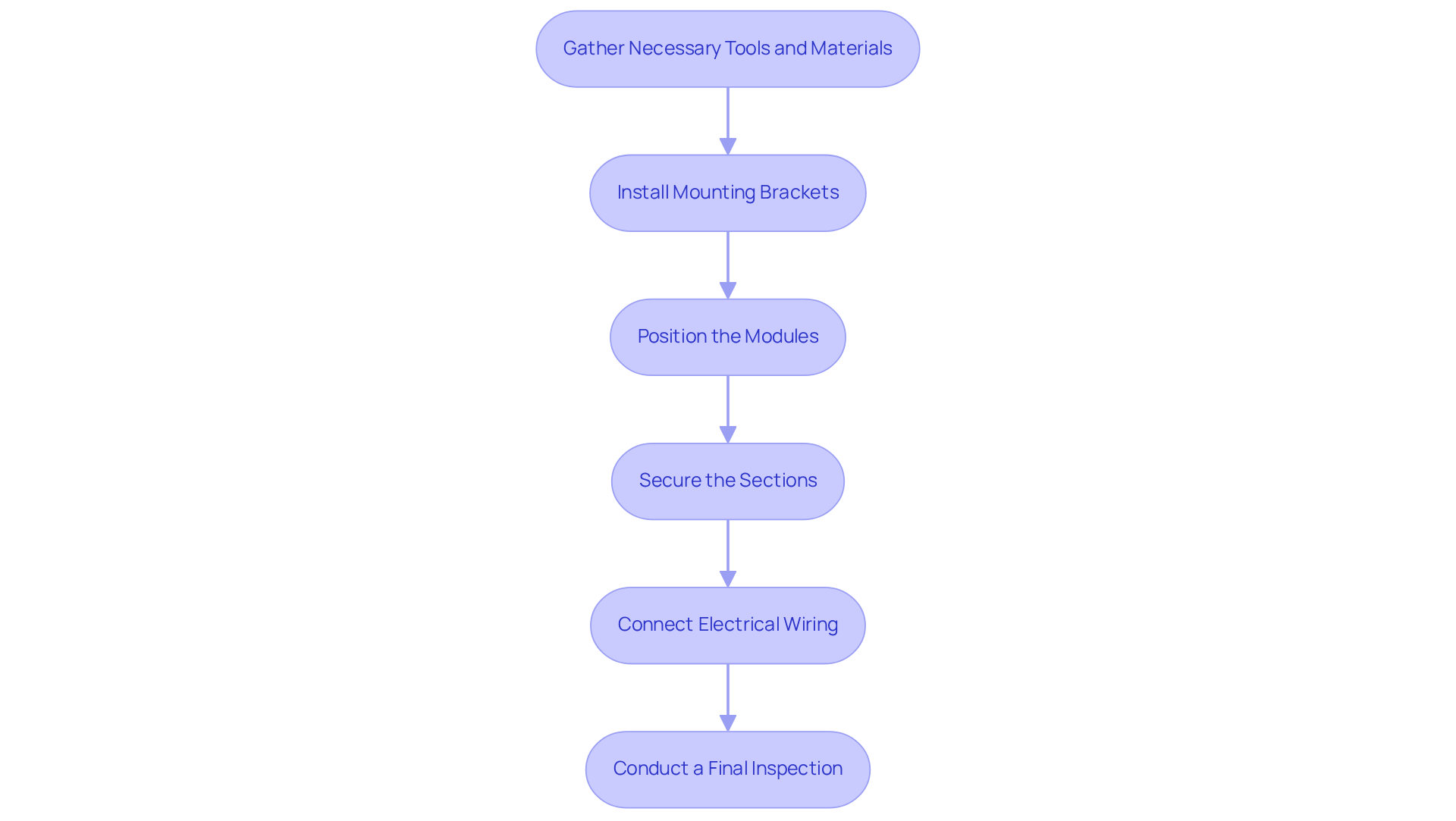
Maintain and Monitor Solar Panel Performance
To ensure optimal performance of your solar panel system, it is crucial to adopt effective maintenance and monitoring practices.
-
Routine Maintenance: Clean the surfaces at least twice a year to eliminate dust, dirt, and debris that can obstruct sunlight. A soft cloth or sponge with mild soap and water is recommended for this task.
-
Inspect for Damage: Regularly check for any signs of damage, such as cracks or loose connections. Promptly addressing these issues is essential to prevent further damage.
-
Monitor Energy Production: Utilize monitoring systems to track the energy output of your photovoltaic devices. Many systems provide apps or online dashboards for real-time monitoring, allowing you to stay informed about your system's performance.
-
Schedule Professional Inspections: It is advisable to have a professional inspect your system annually. This ensures that everything is functioning correctly and efficiently, maximizing your investment.
-
Keep Records: Maintain detailed records of maintenance activities, inspections, and energy production. This information can help identify trends and potential issues over time, allowing for proactive management of your system.
By implementing these maintenance and monitoring practices, you can ensure that your solar panel system continues to perform at its best for years to come.
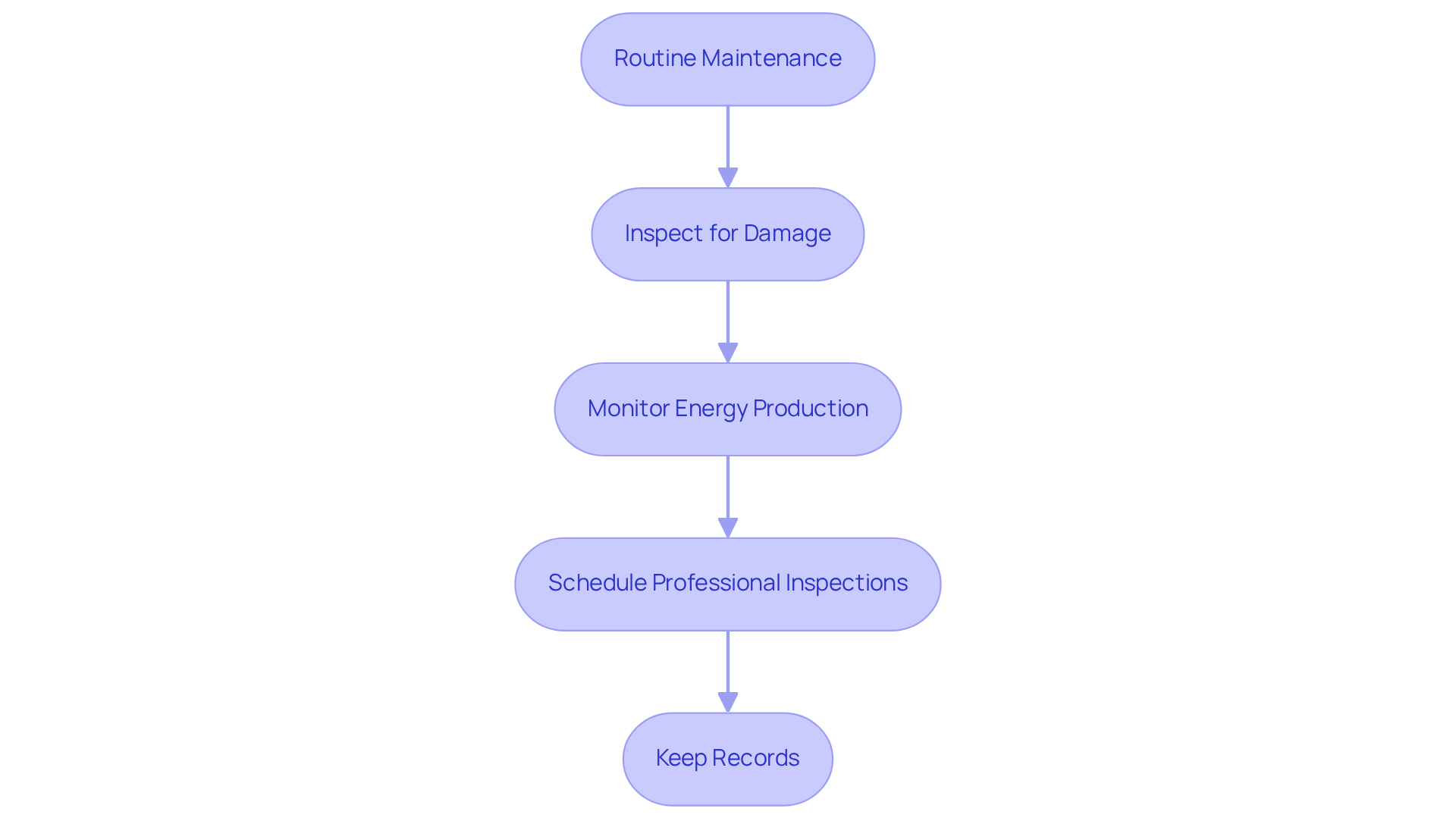
Conclusion
Optimal solar panel placement is essential for maximizing energy production and ensuring the longevity of your renewable energy investment. By understanding the intricacies of solar panel efficiency and the factors that influence placement, homeowners can make informed decisions that lead to significant energy savings and environmental benefits.
Key arguments discussed include:
- The importance of orientation
- Tilt angle
- Shading
- The necessity of a thorough site assessment
- Adherence to local regulations
Each of these elements plays a critical role in determining how effectively solar panels can harness sunlight. Additionally, proper installation techniques and ongoing maintenance practices are vital for sustaining high performance over time.
In light of these insights, investing time and resources into the strategic placement and maintenance of solar panels can yield substantial returns. As the world increasingly turns to renewable energy, optimizing solar panel installation not only supports personal energy independence but also contributes to a more sustainable future for all. Embrace these best practices to unlock the full potential of solar energy and make a lasting impact on your energy consumption.
Frequently Asked Questions
What is photovoltaic efficiency?
Photovoltaic efficiency is the percentage of sunlight that a photovoltaic system can convert into usable electricity. Most residential solar arrays achieve efficiencies between 15% and 22%.
What factors influence solar panel efficiency?
Key factors influencing efficiency include the type of solar cells (monocrystalline panels generally outperform polycrystalline panels), temperature (solar collectors operate more effectively at cooler temperatures), and shading (even partial shading can significantly reduce a unit's output).
How does panel orientation affect solar energy generation?
In the Northern Hemisphere, south-facing panels capture the most sunlight throughout the day. Modifying the angle of the surfaces can further enhance their performance and maximize energy generation.
What is the ideal tilt angle for solar panels?
The ideal tilt angle for solar arrays typically equals the latitude of the installation location. Seasonal adjustments can also be beneficial, with a steeper angle in winter capturing more sunlight when the sun is lower in the sky.
How does shading impact solar panel efficiency?
Avoiding shaded areas caused by trees, buildings, or other obstructions is crucial, as even minor shadows can lead to significant reductions in output. A case study indicated that setups with minor shading faced a 30% reduction in efficiency.
Why are weather conditions important for solar panel placement?
Local climate patterns, including average sunlight hours and seasonal variations, should be considered when determining optimal placement. Regions with frequent cloud cover may require different strategies compared to sunnier locales.
What should be considered regarding the roof structure for solar panel installation?
The roof must be structurally sound and capable of supporting the weight of the solar units. Flat roofs may require specialized mounting solutions to optimize angle and exposure, while sloped roofs typically allow for more straightforward installations. Evaluating roof conditions during energy audits is significant for ensuring optimal placement.
List of Sources
- Identify Key Factors Affecting Placement
- QUOTING DESIGN | Brighthouse (https://brighthouse.solar/quoting-design)
- Solar panel quotes: 8 questions to ask installers [2025] (https://sunsave.energy/solar-panels-advice/costs/quotes)
- Install Panels for Maximum Efficiency
- Trump Solar Tariffs Are Shaping Solar Installer Strategies in 2025 (https://greenlancer.com/post/trump-solar-tariffs)
- SolarPower Europe launches new Operation & Maintenance Best Practices Report - SolarPower Europe (https://solarpowereurope.org/press-releases/solar-power-europe-launches-new-operation-and-maintenance-best-practices-report-2)
- Solar Maintenance Tips and Best Practices (https://solarstore.com/news/2025/april/solar-maintenance-tips-and-best-practices)
- Solar Industry Research Data – SEIA (https://seia.org/research-resources/solar-industry-research-data)
- News Flash (https://issaquahwa.gov/CivicAlerts.aspx?AID=6035)




